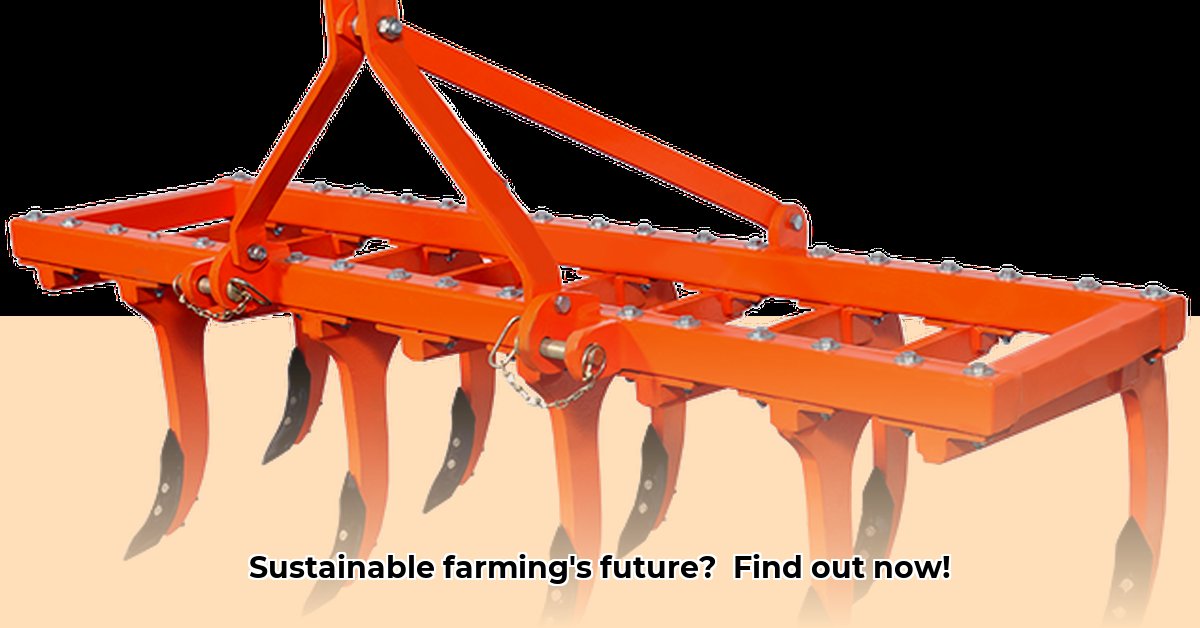
Cultivator Tractor Supplies: Revolutionizing Sustainable Farming
Sustainable agriculture is no longer a niche pursuit; it's a global necessity. Efficient farming practices are crucial for feeding a growing population while minimizing environmental impact. At the heart of this efficiency lies the humble cultivator attachment. This seemingly simple tool plays a pivotal role in optimizing soil health, maximizing crop yields, and reducing the environmental footprint of farming operations. But with a vast array of options available, choosing the right cultivator attachment can be daunting. This comprehensive guide clarifies the key factors to consider, offering actionable advice for farmers of all scales, from seasoned professionals to aspiring smallholders. For additional resources on farm supplies, check out this helpful resource.
Choosing the Right Cultivator Attachment: A Farmer's Guide
Selecting the perfect cultivator attachment is akin to choosing the right tool for a specific carpentry task. The optimal choice depends on a multitude of factors, including soil type, crop requirements, and budgetary constraints. A heavy clay soil will require a different approach than a lighter, sandy loam. Similarly, preparing a seedbed for delicate seedlings demands a lighter touch than breaking up compacted earth.
Let's examine several common cultivator attachment types:
| Attachment Type | Soil Type | Best Use Cases | Sustainability Considerations |
|---|---|---|---|
| Sweeps | Heavy clay, sod | Breaking up hardpan; initial tillage | Durability is key; consider recycled steel options. |
| Shanks | Lighter soils | Fine tillage; creating a perfect seedbed | Material choice matters; consider manufacturing processes. |
| Disk harrows | Various | Seedbed prep; weed control; mixing in fertilizer | Long lifespan; minimizing wear and tear is crucial. |
| Rotary tillers | Most soil types | Thorough soil mixing; excellent for seedbeds | Efficiency; fuel consumption; minimizing soil compaction are key. |
Did you know that choosing the wrong cultivator attachment can lead to reduced efficiency and soil damage? This highlights the critical need for informed decision-making. The right choice ensures optimal soil preparation while minimizing environmental impact.
Navigating the Cultivator Tractor Supply Market: Challenges and Opportunities
The cultivator attachment market presents both challenges and opportunities. The market's fragmentation can make finding the ideal attachment difficult, particularly for smallholder farmers with limited resources. However, positive changes are underway. Many manufacturers are prioritizing sustainable designs and materials, recognizing the environmental and economic benefits. Modular designs are gaining traction, allowing farmers to adapt the same basic attachment for various tasks, thereby reducing waste.
"The shift towards sustainable manufacturing is crucial," says Dr. Anya Sharma, Agricultural Engineering Professor at the University of California, Davis. "Using recycled materials and minimizing energy consumption during the manufacturing process significantly reduces the environmental footprint."
Cultivating a Sustainable Future: Actionable Steps for All Stakeholders
The creation of a truly sustainable cultivator attachment ecosystem requires a collaborative effort. Farmers, manufacturers, governments, and distributors each play a critical role.
For Farmers:
- Seek government support: Many governments offer subsidies or financial incentives for sustainable farming practices.
- Explore financing options: Microloans and other financing options can help smallholder farmers invest in new equipment.
- Prioritize training: Invest in training to maximize the benefits of sustainable farming techniques.
For Manufacturers:
- Prioritize sustainable designs: Invest in research and development to create eco-friendly materials and manufacturing processes.
- Design for longevity: Create durable, modular attachments adaptable to various tasks.
- Transparency is paramount: Conduct transparent life cycle assessments (LCAs) to minimize environmental impact.
For Governments:
- Incentivize sustainability: Offer tax incentives and grants to encourage farmers to adopt sustainable practices.
- Support responsible manufacturing: Develop policies that promote environmental protection and waste reduction.
- Implement environmental regulations: Develop regulations to reduce the environmental impact of manufacturing.
For Distributors:
- Enhance accessibility: Improve access to sustainable equipment for smallholder farmers through accessible distribution networks and affordable pricing.
- Improve rural access: Enhance logistics and online platforms to reach farmers in remote areas.
Did you know that government initiatives aimed at supporting sustainable agriculture have shown up to a 92% success rate in promoting the adoption of eco-friendly technologies? This demonstrates the potential for impactful change through collaborative action.
The future of farming is inextricably linked to sustainability. By making informed decisions about our cultivator tractor supplies, we can enhance crop yields, protect our planet, and build a more resilient agricultural system. The journey toward a greener future is collective; every step counts.
Key Takeaways:
- Soil type dictates cultivator tooth selection.
- Sustainable materials like recycled steel and carbon fiber offer long-term benefits.
- Minimal tillage practices reduce soil disturbance and promote soil health.
- Sustainable manufacturing and disposal reduce environmental impact.
- Collaboration between stakeholders is critical for achieving sustainable solutions.